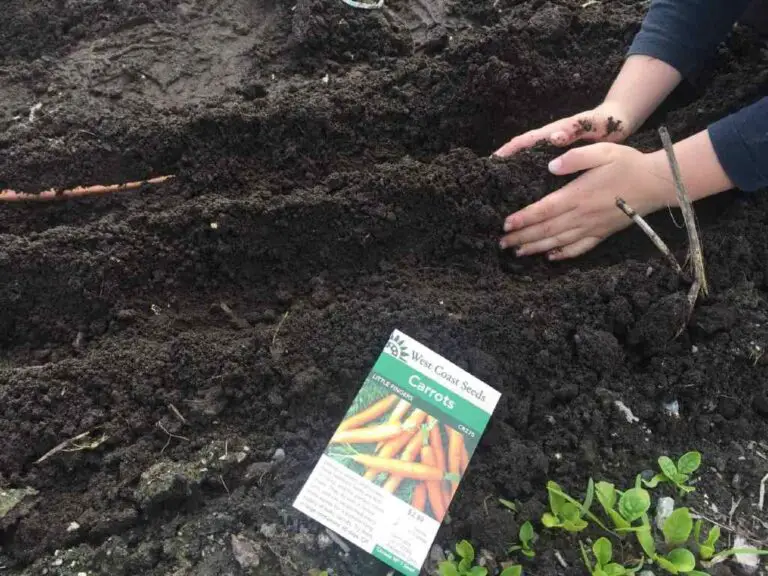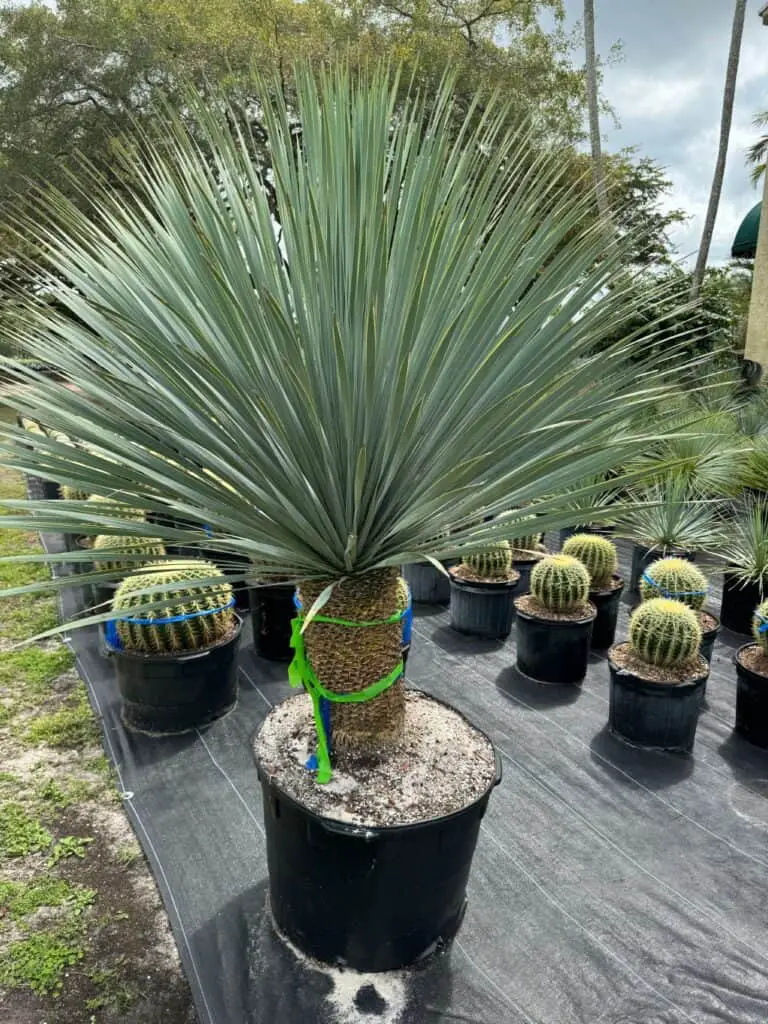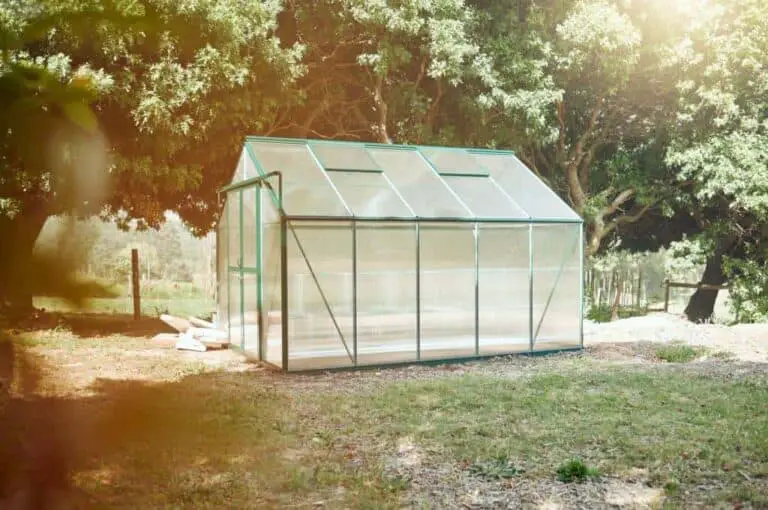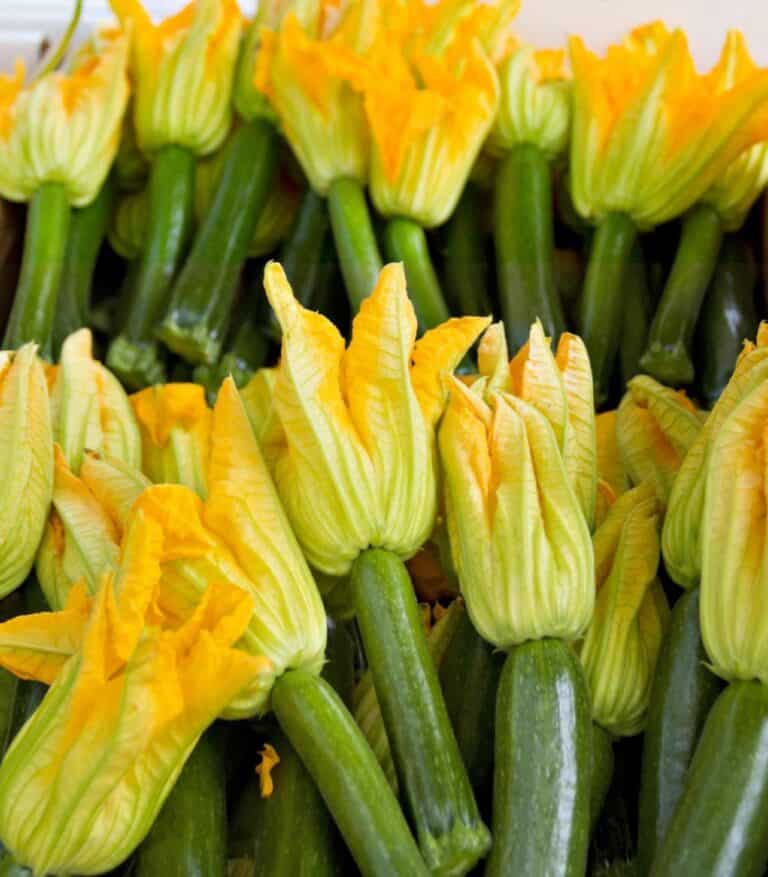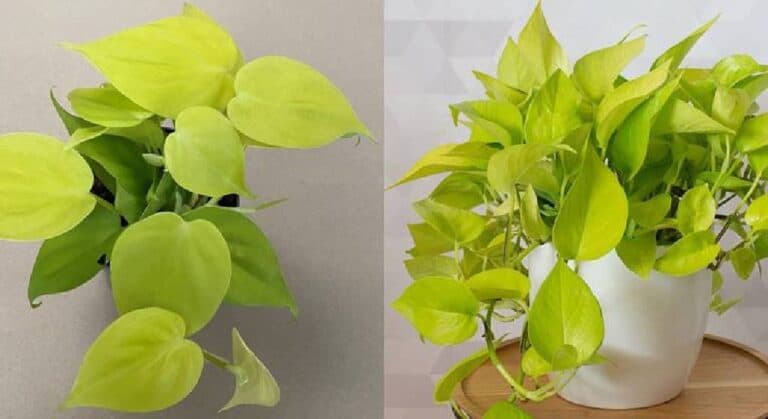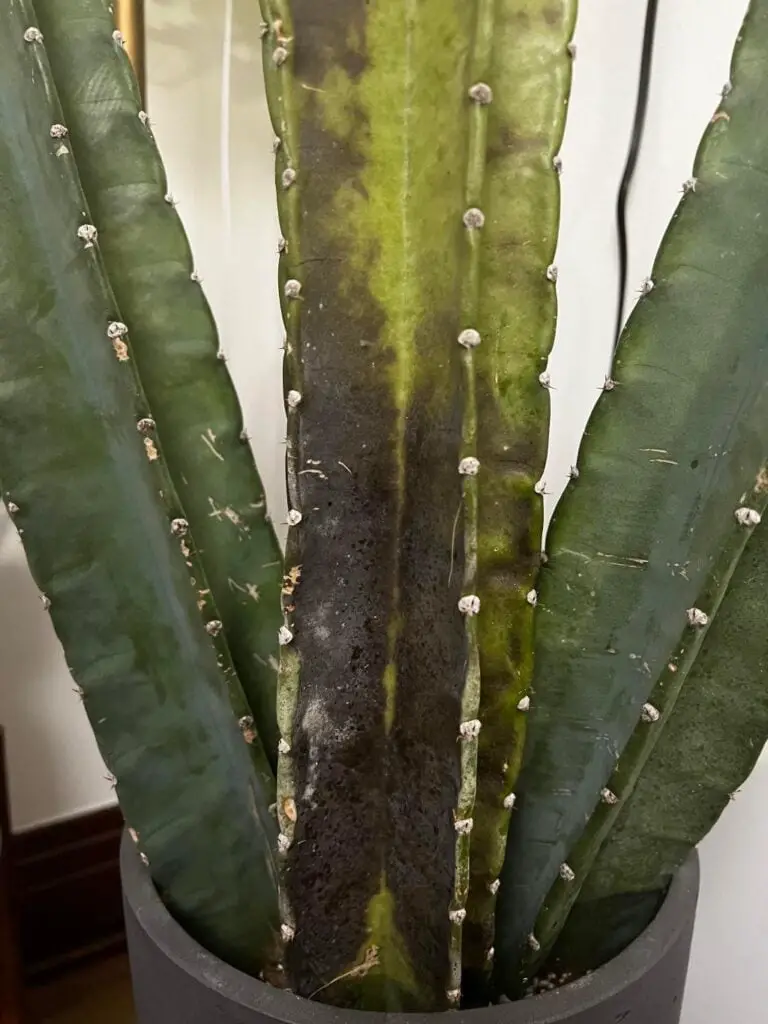Common Sky Pencil Holly Problems: How to Treat and Prevent Them
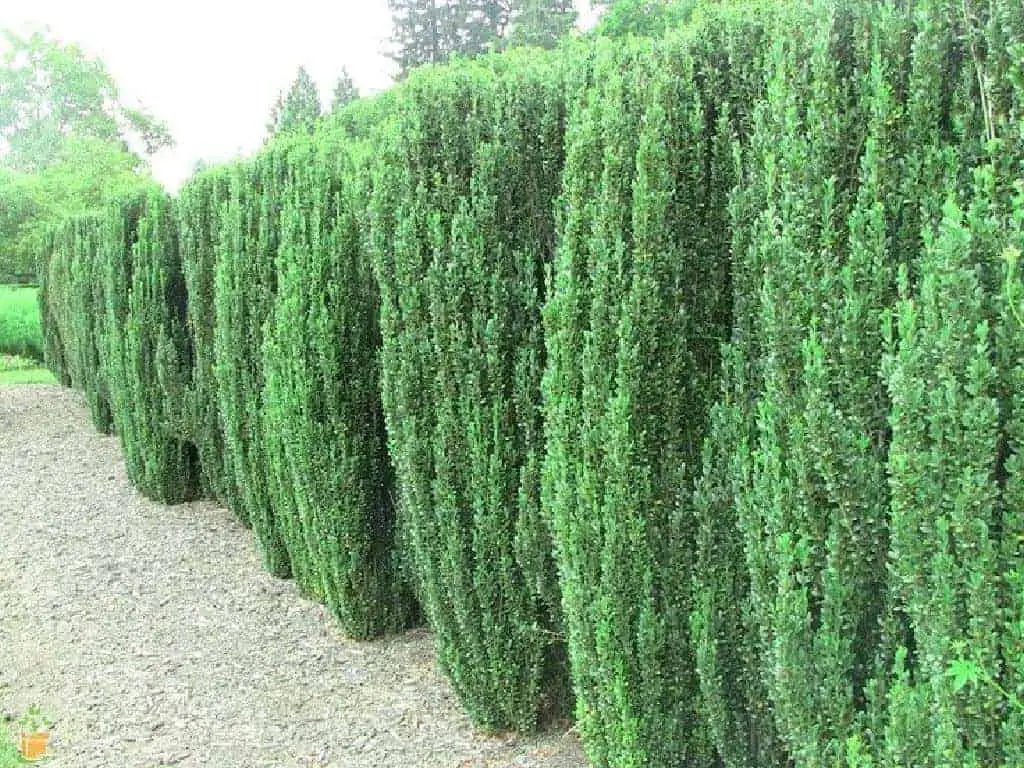
Sky Pencil Hollies are a beautiful and unique plant that can add height, texture, and interest to any landscape. However, like any plant, they are susceptible to a variety of problems that can affect their health and appearance.
Whether you are an experienced gardener or a novice, it is important to know the common problems with Sky Pencil Hollies. You also need to know how to treat and prevent them. From botryosphaeria canker to root rot and scale insects, there are several problems that can affect these plants.
In this article, we will explore some of the most common Sky Pencil Holly problems and offer tips on how to keep your plants healthy and thriving. You can fix these problems. Doing so will keep your Sky Pencil Holly healthy and beautiful in your garden.
About Sky Pencil Holly
Sky Pencil Holly, also known as Ilex crenata ‘Sky Pencil,’ is a versatile and elegant plant that has become increasingly popular in recent years. This evergreen shrub is from Japan, and it is highly valued for its smooth, straight growth, dense foliage, and unique look.
It is widely used as a tall accent plant. It is also used as a backdrop for other plants or a low-care screen. This is true in both homes and businesses.
The plant gets its name from its slender, columnar shape, which can reach up to 10 feet tall but typically grows to 6 to 8 feet in height. Its dense, dark green foliage is glossy and leathery, and it adds a touch of elegance to any landscape.
It produces small, inconspicuous flowers in the spring that eventually give way to small, black berries in the fall. The berries provide food for birds, making this plant an excellent addition to wildlife gardens.
One of the most appealing aspects of Sky Pencil Holly is its adaptability to a wide range of growing conditions. It is hardy in USDA Zones 5 to 9, and it can thrive in full sun or partial shade. It prefers moist, well-draining soil but can tolerate a range of soil types, including clay and sand. This plant is also highly resistant to pests and diseases, making it an ideal low-maintenance plant for busy gardeners.
In terms of landscape design, Sky Pencil Holly is a versatile plant that can be used in a variety of ways. Its upright habit makes it an excellent choice for creating vertical interest in a garden, whether as a specimen plant or as a backdrop for other plants. It can also be used to create a low-maintenance hedge or screen that requires little pruning. When planted in containers, Sky Pencil Holly can add a touch of elegance to a patio or entryway.
Common Sky Pencil Holly Problems
Sky Pencil Holly is a popular plant that can add a touch of elegance and vertical interest to any garden or landscape. However, like any plant, it can be susceptible to a variety of problems that can impact its health and appearance. Here are some common problems to watch out for when growing Sky Pencil Holly:
1. Botryosphaeria Canker
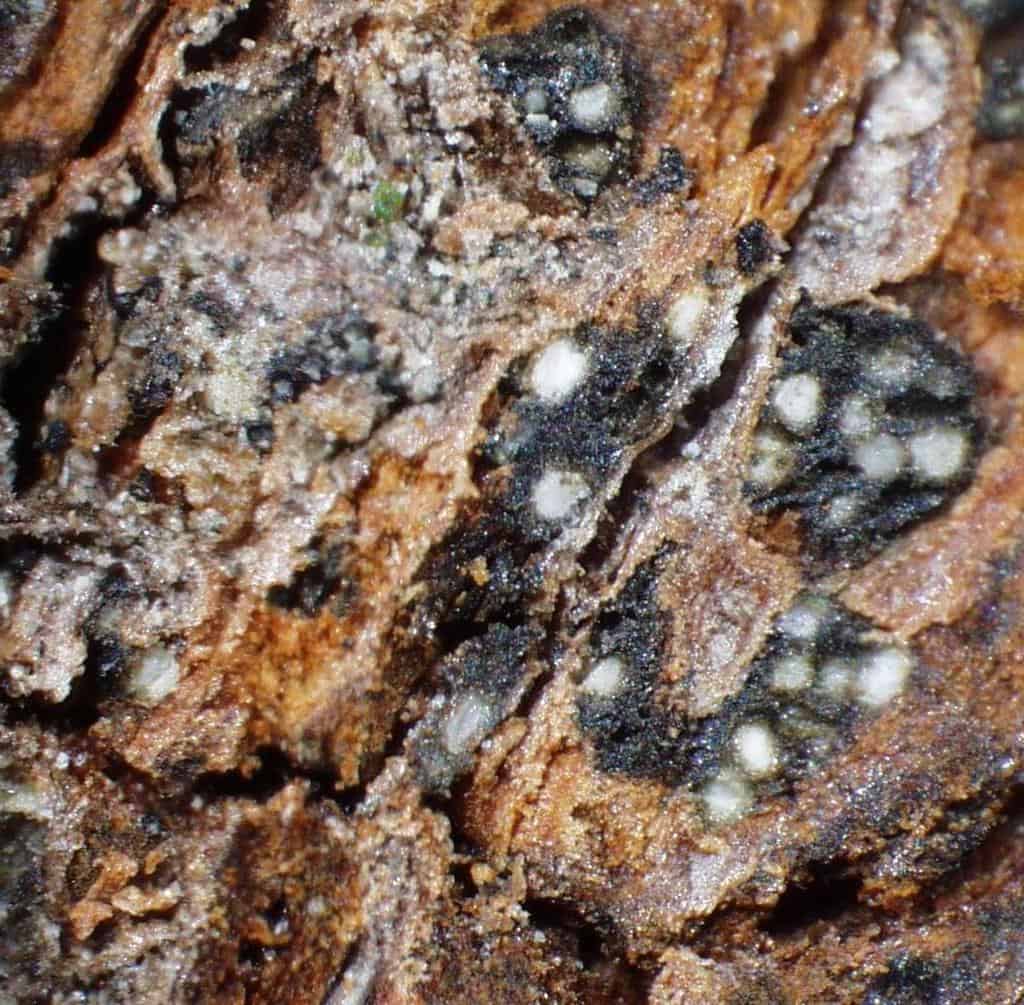
Botryosphaeria canker is a fungal disease that can affect a wide range of woody plants, including Sky Pencil Hollies. This disease can cause the bark to crack and the plant to dieback, leading to stunted growth or even death if left untreated. Fortunately, there are ways to prevent and control Botryosphaeria canker in Sky Pencil Hollies.
One of the most important steps in preventing Botryosphaeria canker is to maintain proper plant health. Stressed Sky Pencil Hollies are more prone to fungal infections. This is due to bad soil, too much or too little water, or a lack of nutrition. It is important to monitor soil moisture levels, improve drainage if necessary, and use a balanced fertilizer according to the plant’s needs.
Another important factor in preventing Botryosphaeria canker is proper pruning. Pruning is necessary to remove any dead or diseased wood, which can serve as a site of infection for the fungus. It is important to prune with clean, sharp tools and to avoid leaving stubs, which can attract pests and pathogens. Additionally, it is important to avoid over-pruning, which can weaken the plant and make it more susceptible to disease.
How to Treat and Prevent Botryosphaeria Canker
If Botryosphaeria canker is detected in a Sky Pencil Holly, prompt treatment is necessary to prevent the spread of infection. The infected areas should be cut off and thrown away. Then, clean any pruning tools with a solution of one part bleach to nine parts water. A fungicide may also be necessary to control the spread of the disease, but it is important to follow label instructions carefully.
2. Web Blight
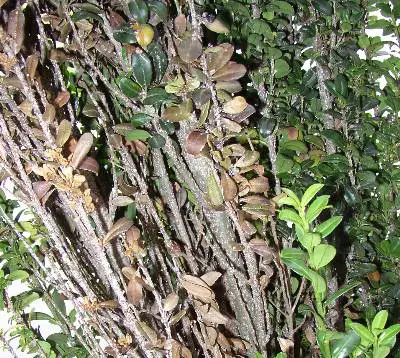
Even though Sky Pencil Holly is hardy and requires little maintenance, a few diseases and pests can still affect it. One of the most common issues that gardeners encounter with this plant is web blight.
Web blight, also known as Rhizoctonia web blight, is a fungal disease that affects a variety of plants, including Sky Pencil Holly. It is characterized by the presence of a white, web-like material that forms on the stems and leaves of the plant. As the disease progresses, the affected foliage will turn brown and eventually die off.
The fungus that causes web blight thrives in warm, humid conditions and can spread rapidly under these conditions. Too much water, bad air flow, and crowding all cause web blight. If a gardener sees the distinctive webs on their Sky Pencil Holly, they should act quickly to stop the disease from spreading to other plants.
How to Treat and Prevent Web Blight
Fortunately, there are several ways to treat and prevent web blight on Sky Pencil Holly. The first step is to remove any affected foliage immediately and dispose of it in a sealed plastic bag. This will help to prevent the spread of the disease to other parts of the plant or to nearby plants.
Gardeners can reduce the chance of web blight by removing damaged leaves and taking other preventative steps. Proper air circulation is key. You can achieve it by pruning and thinning the plant. This practice prevents humidity buildup and cuts the risk of fungal diseases.Gardeners should also avoid overwatering and ensure that the soil around the plant is well-drained.
If the disease has already taken hold, there are several fungicides that can be applied to treat web blight. When using fungicides, follow the maker’s instructions carefully. Don’t use them too much or in a way that could hurt good bugs or nearby plants.
3. Leaf Spot
Another common issue that gardeners may encounter with Sky Pencil Holly is leaf spot. Leaf spot is a fungal disease that causes circular or irregular spots on the foliage of the plant. There may be a yellow halo surrounding the spots, which could be brown, black, or gray.
Numerous different types of fungi are responsible for leaf spot, which can spread quickly in humid and wet environments. Overwatering, poor air circulation, and overcrowding can all contribute to the development and spread of leaf spot on Sky Pencil Holly. If left untreated, leaf spot can weaken the plant and make it more susceptible to other diseases and pests.
How to Treat and Prevent Leaf Spot
Gardeners who notice leaf spot on their Sky Pencil Holly should act quickly to prevent the disease from spreading. The first step is to remove any affected foliage immediately and dispose of it in a sealed plastic bag. This will help to prevent the spread of the disease to other parts of the plant or to nearby plants.
Gardeners can reduce the chance of leaf spot by doing more than just removing the affected leaves. Providing proper air circulation by pruning and thinning the plant can help prevent the buildup of humidity and reduce the risk of fungal diseases. Gardeners should also avoid overwatering and ensure that the soil around the plant is well-drained.
If the disease has already taken hold, there are several fungicides that can be applied to treat leaf spot. When using fungicides, follow the maker’s instructions carefully. Don’t overuse them or use them in a way that could hurt good bugs or nearby plants.
In some cases, Sky Pencil Holly may be more susceptible to leaf spots due to stress or other factors. Ensuring that the plant is well-cared for and receiving adequate nutrients and water can help to strengthen its resistance to disease and pests.
4. Root Rot
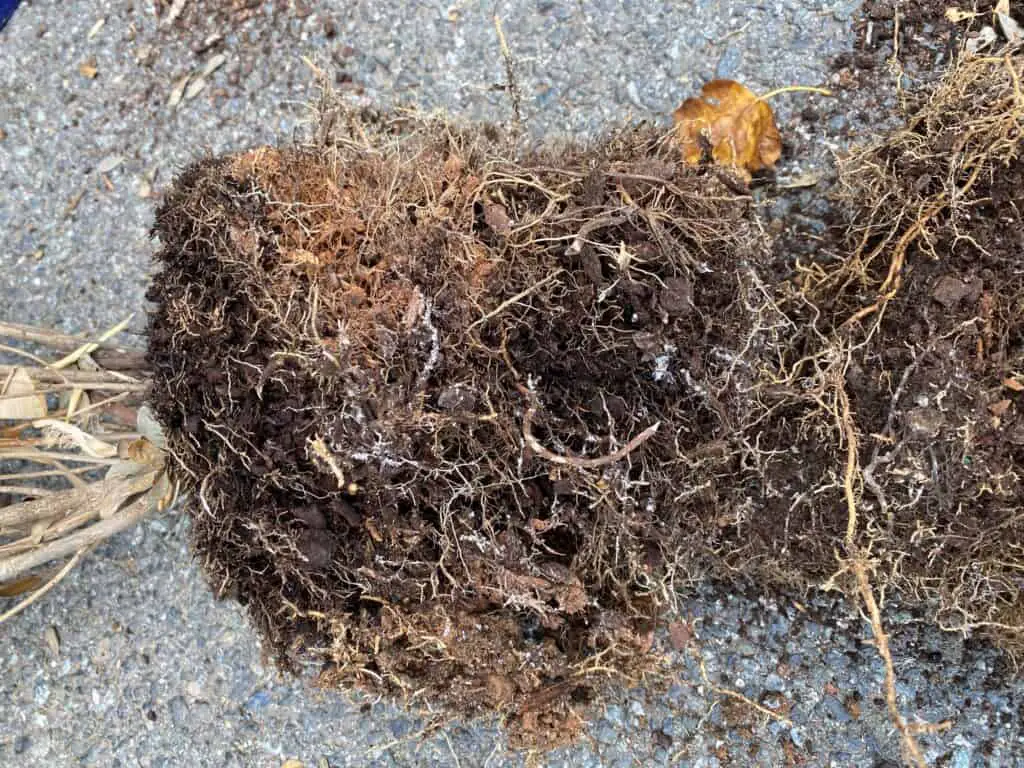
Root rot is a fungal disease that can have devastating effects on Sky Pencil Hollies. Numerous fungi that thrive in wet, poorly drained soil are the cause of this disease. When the roots are infected, they can’t take in water and nutrients, which causes the plant to wilt, turn its leaves yellow, and eventually die. Fortunately, there are ways to prevent and control root rot in Sky Pencil Hollies.
How to Treat and Prevent Root Rot
One of the most important steps in preventing root rot is to ensure proper soil drainage. Sky Pencil Hollies thrive in well-draining soil and are susceptible to root rot if they are planted in areas with poor drainage. To improve drainage, it may be necessary to amend the soil with organic matter or to install drainage tiles. Additionally, it is important to avoid over-watering, which can lead to waterlogged soil and create a breeding ground for fungi.
Another important factor in preventing root rot is proper plant health. Sky Pencil Hollies that are stressed due to poor soil conditions or lack of proper nutrition are more susceptible to fungal infections. It’s important to keep an eye on how much water is in the soil, use a balanced fertilizer based on what the plant needs, and give it enough water when it’s dry.
If root rot is detected in a Sky Pencil Holly, prompt treatment is necessary to prevent the spread of infection. The infected plant should be taken out of the area and thrown away in the right way. Any other plants in the area should be closely watched for signs of infection. Also, a fungicide may be needed to stop the disease from spreading, but it is important to follow the directions on the label carefully.
5. Scale Insects

Scale insects are a common pest that can affect Sky Pencil Hollies.The insects attach to the plant’s stems and leaves. They feed on the sap and cause yellowing, wilting, and stunted growth. Additionally, they can produce a sticky substance called honeydew that can attract other pests and pathogens. Fortunately, there are ways to prevent and control scale insects in Sky Pencil Hollies.
How to Treat and Prevent Scale Insects
One of the most important steps in preventing scale insects is to maintain proper plant health. Sky Pencil Hollies that are stressed due to poor soil conditions or a lack of proper nutrition are more susceptible to pest infestations. It’s important to keep an eye on how much water is in the soil, use a balanced fertilizer based on what the plant needs, and give it enough water when it’s dry.
Another important factor in preventing scale insects is proper pruning. Pruning can help to remove any infested branches or leaves, which can reduce the number of insects present on the plant. It can also help air flow, which can stop the growth of fungi that might be attracted to the honeydew that the insects produce.
If you find scale insects on a Sky Pencil Holly, you need to treat it right away to stop the infestation from spreading. A great treatment for scale insects is to use an insecticidal soap or oil. These can suffocate the insects and stop more damage to the plant. It is important to follow label instructions carefully and to treat the plant at the first sign of infestation.
6. Spider Mites
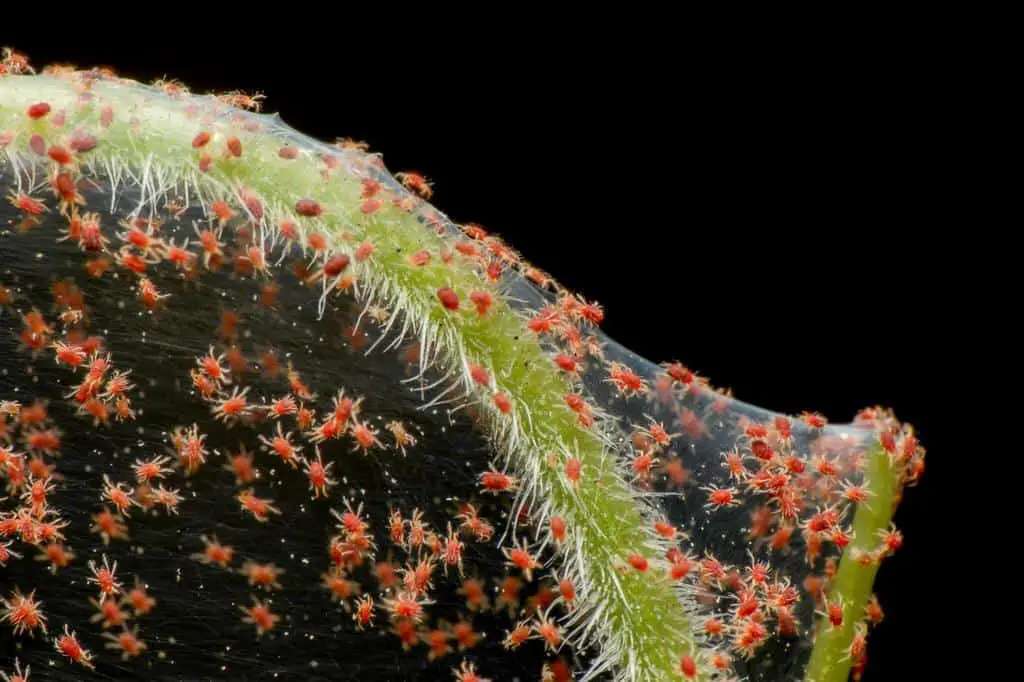
Spider mites are a common pest that can infest Sky Pencil Holly, causing significant damage to the plant’s foliage. These tiny, sap-sucking insects are nearly invisible to the naked eye and can be challenging to detect until the damage is already done.
Spider mites typically thrive in hot, dry conditions, which is why they are more common in the summer months. They are usually found on the undersides of leaves. They spin webs and feed on the plant’s sap, causing the foliage to yellow and drop early.
How to Treat and Prevent Spider Mites
To keep spider mites from taking over your Sky Pencil Holly, you must give the plant the right conditions for growth. Make sure that the plant is adequately watered and that the soil is kept moist but not waterlogged. Avoid over-fertilizing the plant, as this can make it more susceptible to spider mite infestations.
If you suspect that your Sky Pencil Holly has a spider mite infestation, it is essential to act quickly. The longer you wait to address the problem, the more damage the spider mites will cause. One effective way to control spider mites is to spray the plant with a strong blast of water from a garden hose. This will dislodge the mites and help to keep their populations in check.
Another option is to apply horticultural oil or insecticidal soap to the plant. These products work by suffocating the spider mites and disrupting their life cycle. Be sure to follow the instructions carefully when using these products. They can harm helpful insects and other plants if used improperly.
Tips for Maintaining Healthy Sky Pencil Holly
Sky Pencil Holly is an elegant and versatile plant that can add an instant touch of sophistication to any landscape. To keep your Sky Pencil Holly looking its best, it is essential to give it the proper care and attention it deserves. Here are some tips for maintaining a healthy and beautiful Sky Pencil Holly:
- Watering: Sky Pencil Holly prefers moist but well-drained soil. Water the plant deeply once a week, or more often during hot and dry weather. Avoid over-watering, as this can lead to root rot and other problems.
- Pruning: Regular pruning will help to keep your Sky Pencil Holly looking neat and tidy. Prune the plant in early spring or late winter, before new growth begins. Remove any dead, diseased, or damaged branches, as well as any suckers that may have sprouted from the base of the plant.
- Fertilizing: Sky Pencil Holly is a slow-growing plant that does not require frequent fertilization. Apply a balanced fertilizer in early spring, and again in mid-summer, following the instructions on the package.
- Soil: Sky Pencil Holly prefers slightly acidic soil with a pH between 5.0 and 6.5. If your soil is too alkaline, you can add elemental sulfur to lower the pH.
- Sunlight: Sky Pencil Holly prefers full sun to partial shade. Plant the shrub in a location that receives at least six hours of direct sunlight each day.
- Mulching: Apply a layer of organic mulch around the base of the plant to help retain moisture and suppress weeds. Avoid piling the mulch up against the trunk of the plant, as this can lead to rot.
- Pest control: Keep an eye out for common pests, such as spider mites and leaf spot. Regularly inspect your plant for signs of damage and treat any Sky Pencil Holly problems promptly to prevent them from spreading.

